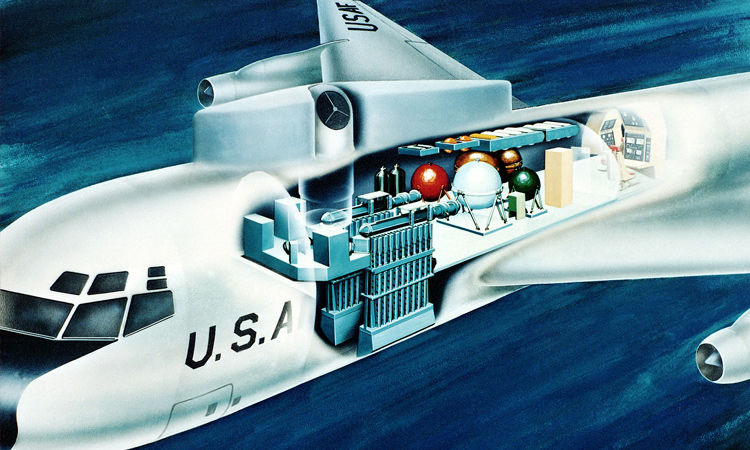Feature
Creating an Airborne Laser Lab
In the 1970s and 1980s, the U.S. Air Force and its contractors experimented with packing a 400-kW gas-dynamic laser into a military-grade Boeing 707.
 Cutaway view of the NKC-135 Airborne Laser Laboratory aircraft. [U.S. National Archives / Kirtland AFB, N.M., USA]
Cutaway view of the NKC-135 Airborne Laser Laboratory aircraft. [U.S. National Archives / Kirtland AFB, N.M., USA]
Editor’s Note: In his new book Lasers, Death Rays, and the Long, Strange Quest for the Ultimate Weapon (Prometheus Books, 2018), OSA Fellow and frequent OPN contributor Jeff Hecht tells the story of directed-energy weapons, from their earliest incarnations in myth and science fiction to efforts to create battle-ready devices in the wake of the laser’s invention. In this lightly edited excerpt from the book, Hecht recounts the history of the Airborne Laser Laboratory, a 1970s-to-early-1980s effort to press the recently invented CO2 laser into service. In the previous decade, he notes, problems scaling up existing lasers to battle-relevant power levels had nearly caused military-laser efforts to run aground. “Then,” Hecht writes, “a rocket scientist had a brainstorm.”
…Log in or become a member to view the full text of this article.
This article may be available for purchase via the search at Optica Publishing Group.
Optica Members get the full text of Optics & Photonics News, plus a variety of other member benefits.
